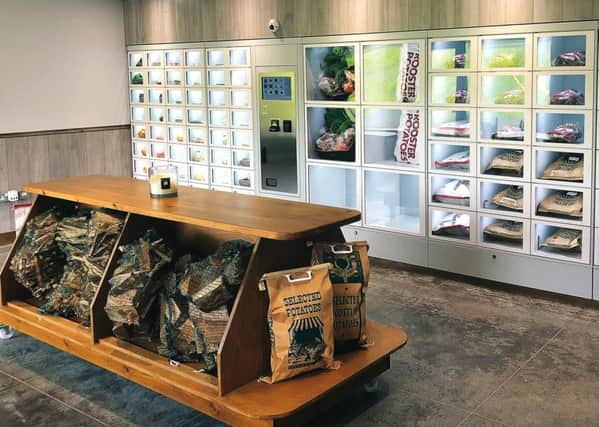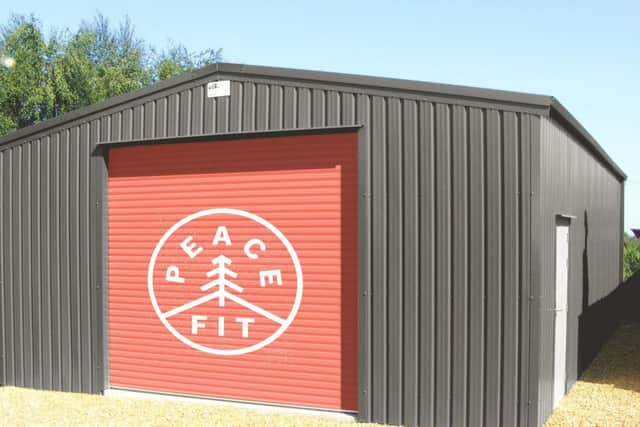How diversification into other activities is helping farmers gain success


There are plenty of reasons for doing so, as the NFU Mutual Diversification Report from 2018 states that 90 per cent of farm diversification schemes are financially successful. So much so that diversified businesses in Scotland generate incomes of some £11,000 more than those that are not, according to the Scottish Government.
“Diversification can mean two things,” explains Calum Johnston, a food and drink consultant at SAC Consulting Solutions, an advisory service for the rural and agriculture sector which works closely with Scotland’s Rural College (SRUC).
“It could be adding value or an extra element to what they are already doing. A dairy farm could be selling milk to a mainstream supermarket, but if milk prices are coming down the farmer might add a vending machine to the farm or within a local collection point that has a high footfall, such as a supermarket or petrol station.


“Alternatively, they could be diversifying into something completely different. A big one recently has been tourism, so farmers have been installing glamping pods or other similar accommodation facilities on the farm.”
Tourism has been a popular choice for farmers and rural business owners during the last decade, and farms across Scotland have installed unique and quirky types of accommodation.
That includes luxury yurts at an organic farm in the Trossachs, pet-friendly lodges set within a 320-acre working farm near St Andrews, and bothies with wood-fired hot tubs near Huntly, all of which offer guests the opportunity of reconnecting with nature.
Arable farmers across the country are branching out into herb, linseed and wild-flower crop production, while those with livestock are adding value with the likes of llamas and bees. Johnston maintains that diversification is often the tipping point of make-or-break for many Scottish farmers, particularly in the face of Brexit and uncertainty over farming subsidies – which amounted to £502 million for Scotland in 2018, according to government figures.
But there is lots of support available for farmers looking to diversify their offerings. The agriculture and rural property team at Edinburgh-based legal firm Morton Fraser are well experienced in helping businesses at all stages to diversify and generate income while ensuring the future sustainability of the business.
James Rust, head of the team and partner at the firm, says: “We are all used to cheap food these days, and the supermarkets compete with each other on that basis.
“If a supermarket can drive a harder bargain with the producers then they will do so, and the producers might not make enough to clear their outlays.
“It is therefore a financial imperative for them to source other incomes, whether that’s letting out a redundant cottage offering bed and breakfast or organising a Segway trip as part of a farm tour.”
And Rust points to renewable energy as a key player in successful rural diversification.
The Scottish Government’s Agri-renewables Strategy for Scotland 2020 aims to support the uptake of renewable energy generation by agricultural businesses in Scotland and sits alongside the 2020 Routemap for Renewable Energy in Scotland, which is aiming for at least 30 per cent of energy demand to come from renewables during that year.
It identifies key actions to reduce barriers to uptake, such as skills and advice support, as well as a streamlined planning and consent process.
“The main direction of travel for the typical land owner is utilisation of his land in relation to renewables, and that has been a major factor in diversification recently,” says Rust, who advises that planning is the key to success, and that farmers should consider the structure of the diversified business, sourcing the right documentation, explore investment propositions and identify the risks and type of each business.
If it is a business in agritourism, however, there are a range of types to consider, says Sharon Flanigan, a social, economic and geographical sciences researcher at the James Hutton Institute. Agritourism, as she defines it, includes anything that involves visitor amenities based on the farm, including a wide range of accommodation types.
Flanigan has been involved with Scottish Agritourism Monitor Farm, launched in 2014 and funded by Scottish Enterprise. The programme is aiming to improve the business performance and tourism of farms through discussion meetings and the sharing of best practice – and it added two agritourism monitor farms in March, to develop their food and tourism enterprises over the next three years.
“Farmers are trying to find ways of representing the sector and educating the public more widely,” says Flanigan. “The idea of showing the public an authentic picture of what agriculture involves is a key part of agritourism, but it is also about making the most of the resources and providing an opportunity for family members to be involved.”
In June, the institute also participated in the LEAF (Linking Environment and Farming) Open Farm Sunday, when 1,600 UK farmers opened their doors to the public and hosted activities help people make the link between the produce grown on the farm and their own lives.
Flanigan adds: “There has been a lot of investment put into training for the agritourism market, and the profile of agritourism as a sector in its own right has certainly been increasing over the last ten years.
“So far, I can see no signs of that slowing down.”
Fit for country life in the Kingdom
Peacehill Farm, near Wormit in Fife, has been in the Forster family since 1926 and specialises in vegetables and cereal crops as well as livestock, namely cattle and pigs.
Husband-and-wife team Ross and Emma Forster have converted a shed and small piece of land on the farm into a gym entitled PeaceFit, combining Emma’s passions for rural life and healthy living.
The company was established in August last year when the couple’s four children began reaching school age.
“I am creating a space that is very welcoming for parents to come and there is plenty of space for both children and adults to run around and keep fit and healthy,” explains Forster, a former primary school PE teacher, CrossFit coach and qualified nutritionist.
The gym, kitted out by Newbridge-based Origin Fitness, is a work in progress but once complete, it will include functional fitness equipment including climbing ropes, tyres for slipping, and jumping boxes.
She maintains that there won’t be any “fancy machines” but there will be lots of equipment that can be used by all ages and all generations.
Forster adds: “There is great privacy and it is a fabulous space that wasn’t really used before, it was probably once a wee paddock that had a horse in it in days gone by. It is really just lovely having that space and I think that for people, wherever you do it exercise is good for you, but it is even better when incorporating it with fresh air and beautiful countryside.”
Machines pay off
Lower Thorneybank Farm Shop, near Inverurie in Aberdeenshire, dates back to 1979, when owner Stuart Stephen’s father began selling vegetables in a wheelbarrow.
These days, Stephen, along with his wife, Catherine, and their children, Neil, Murray, Megan and Penny, runs and a beef and arable enterprise with a retail outlet.
In December, 2018 the Stephens installed an innovative contactless vending machine from Blairgowrie-based JSR Services.
The machine supplies fresh vegetables from the farm and the shop hosts pop-ups, supporting other local producers.
Customers can fill their baskets before paying by cash or card seven days a week.
Stephen says: “We thought the vending aspect would make life easier; theft was the big push because with the honesty box, it was always open to theft. So we decided to move the shop into a new era.
“Contactless is the future and farm shops need to be ready for a cashless society.”
This article first appeared in The Scotsman’s autumn Vision magazine. A digital version can be found here.